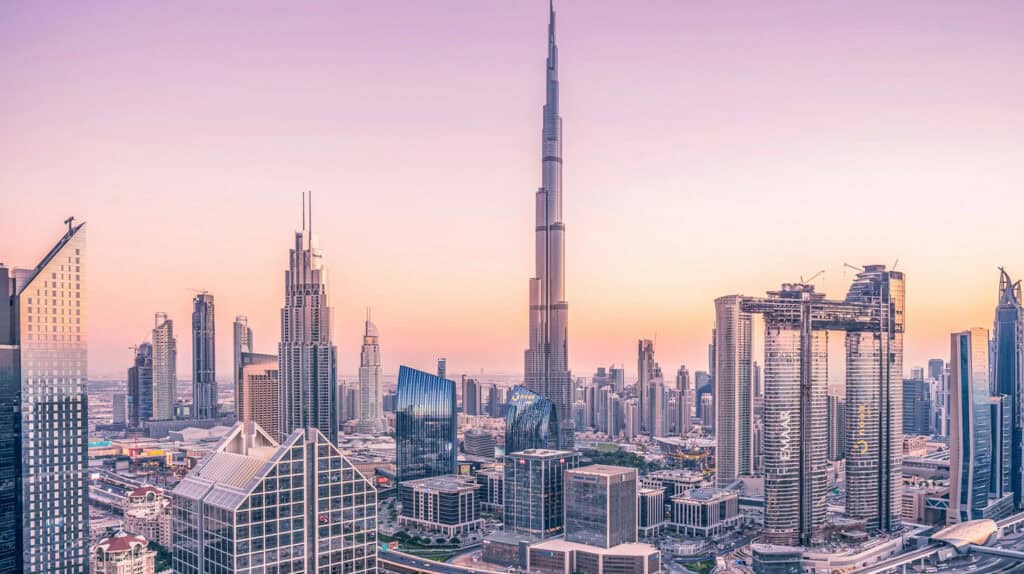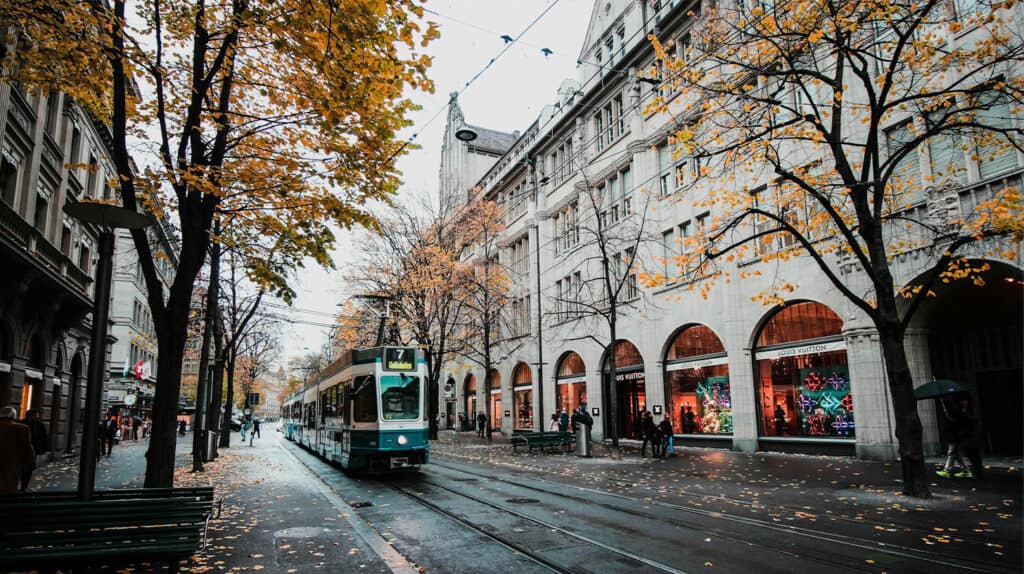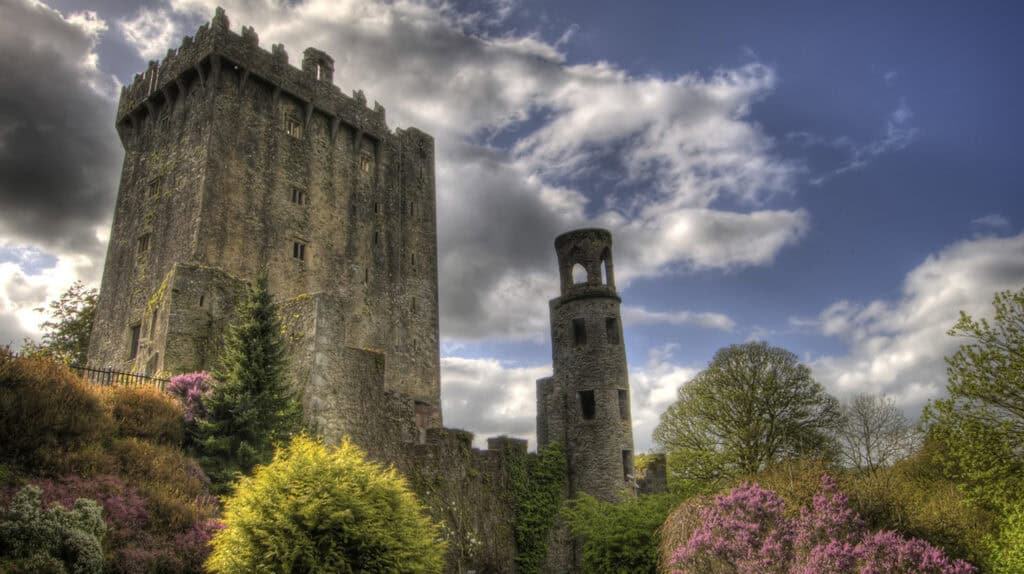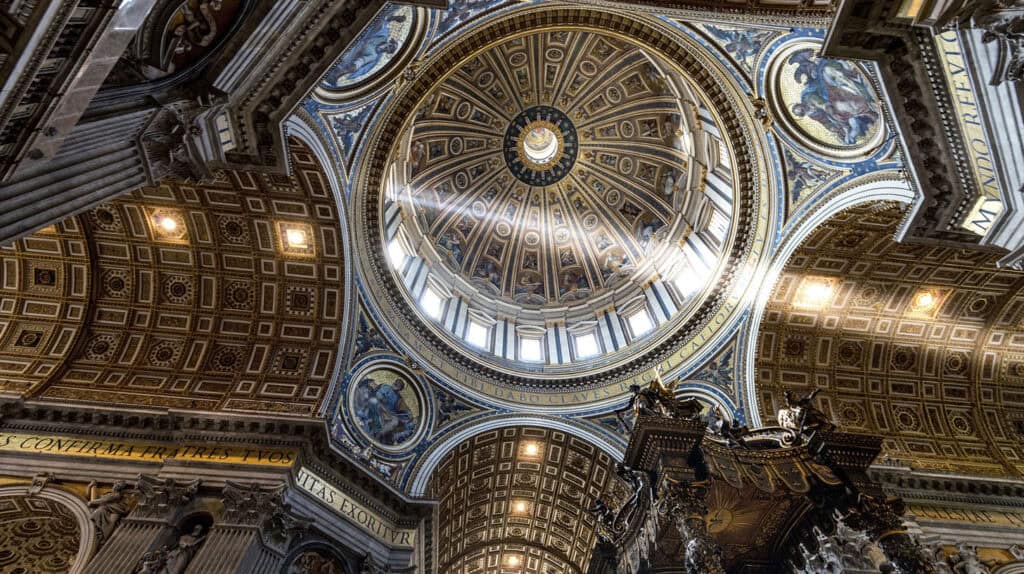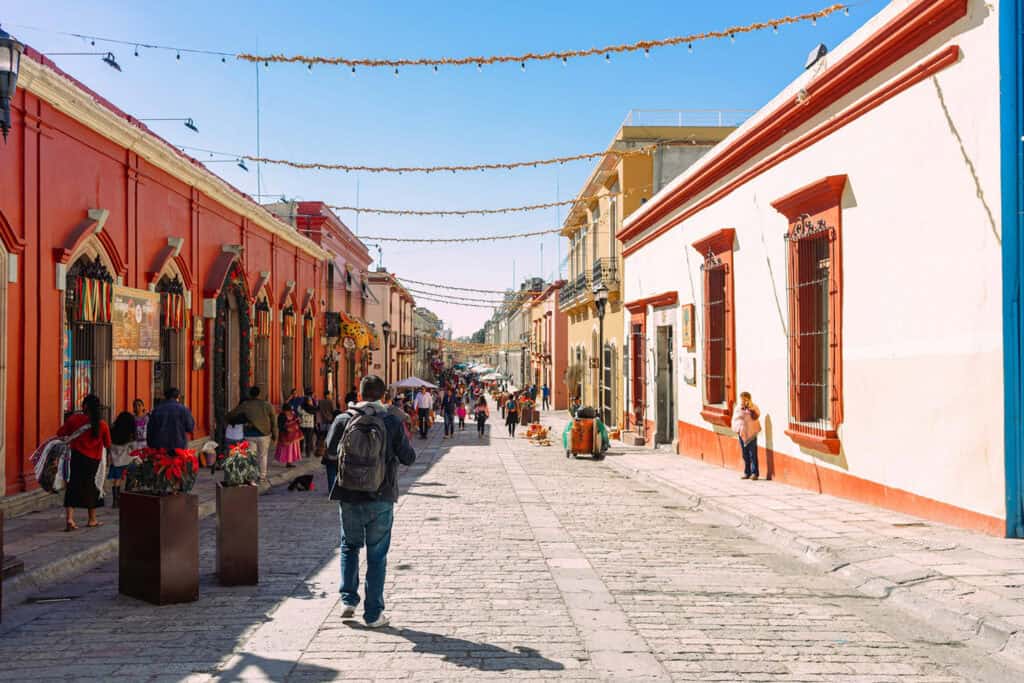
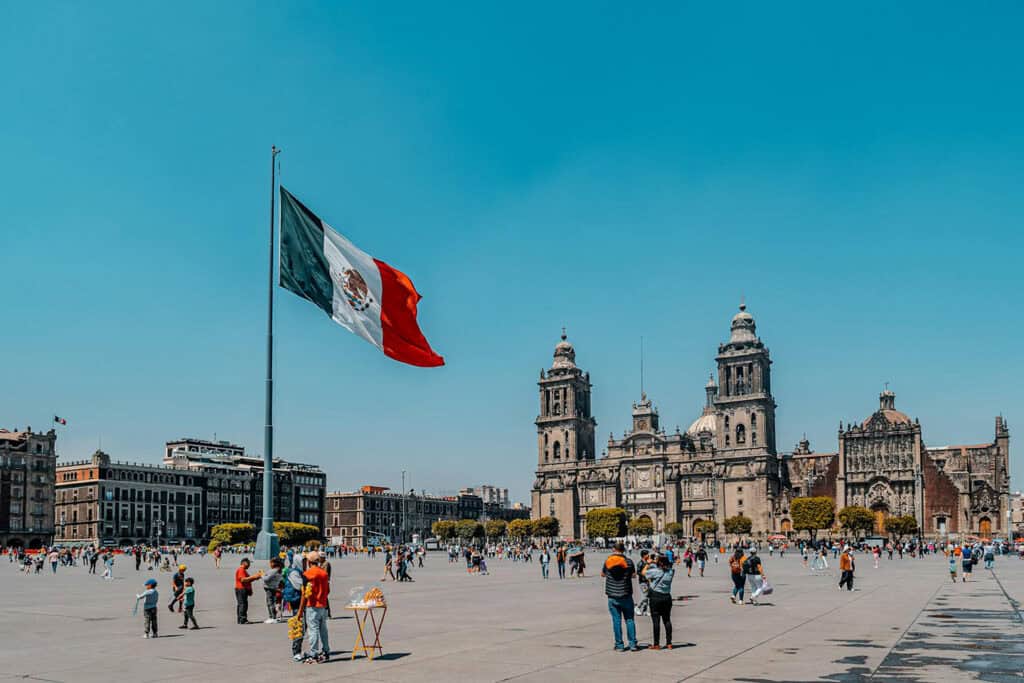
Are you fascinated by architecture that tells a story of both grandeur and cultural heritage?
Mexico, with its blend of ancient wonders, colonial elegance, and modern innovation, offers a unique mosaic of architectural achievements that capture the essence of its cultural evolution.
At Landmarks Architects, we are passionate about showcasing the architectural brilliance that defines Mexico.
In this article, we will explore:
- Ancient Marvels
- Colonial Masterpieces
- 19th Century Innovations
- Modern Icons
- Regional Treasures
Ready to explore Mexico’s architectural heritage?
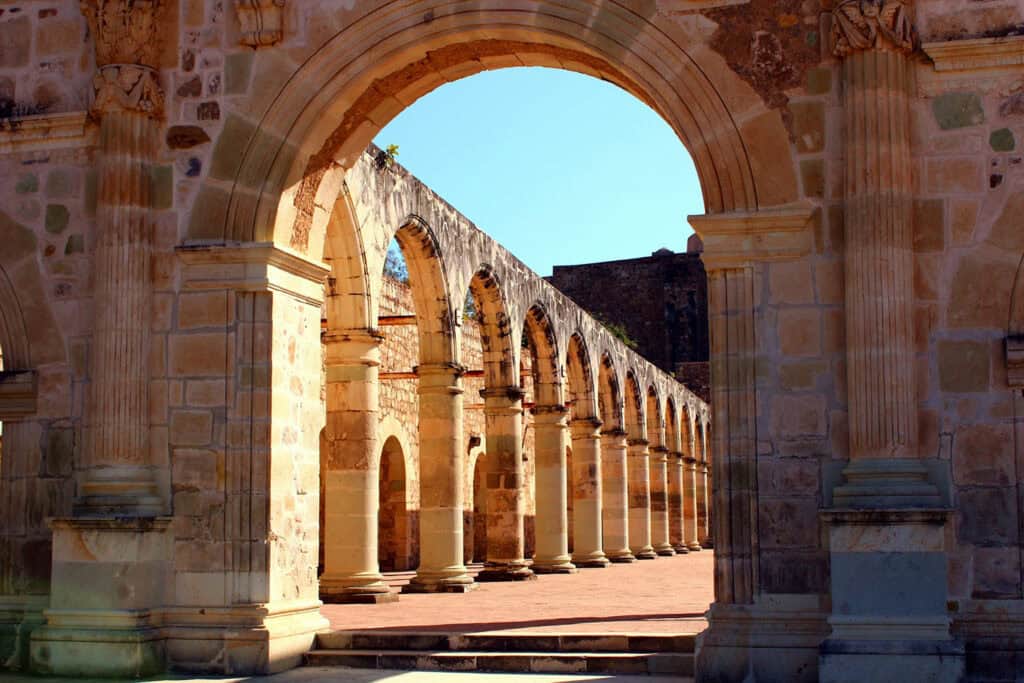
Iconic Mexican Architectural Landmarks
Chichen Itza
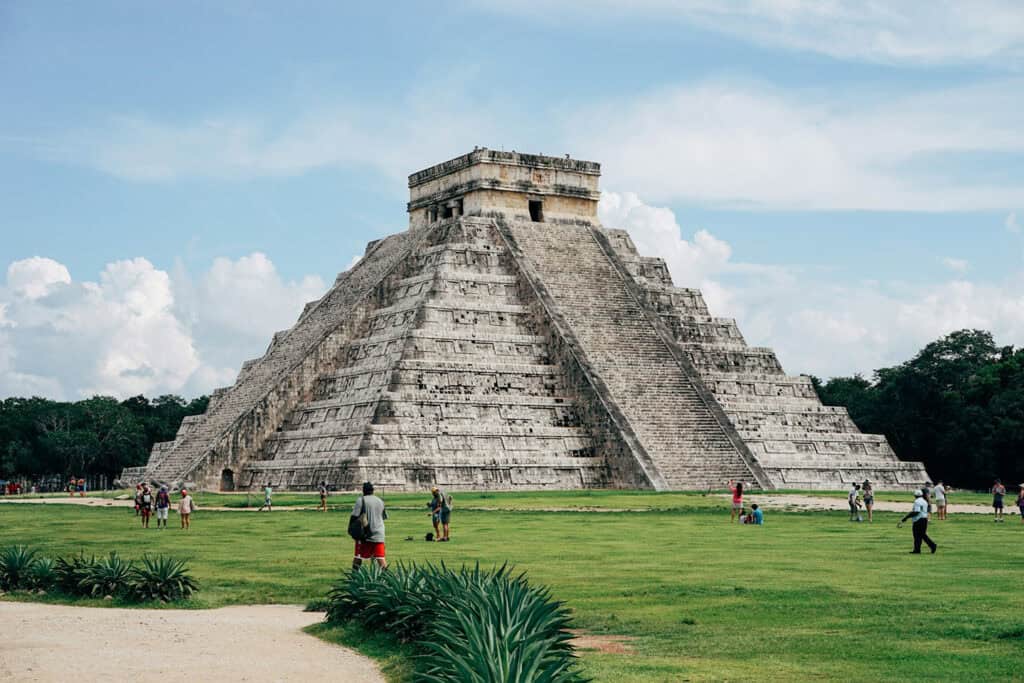
Chichen Itza is an ancient Mayan city located in the Yucatán Peninsula of Mexico. It was a major economic and political center between the 9th and 12th centuries. Recognized as a UNESCO World Heritage Site, Chichen Itza attracts millions of visitors annually, fascinated by its historical significance and architectural splendor.
Mexico City Metropolitan Cathedral
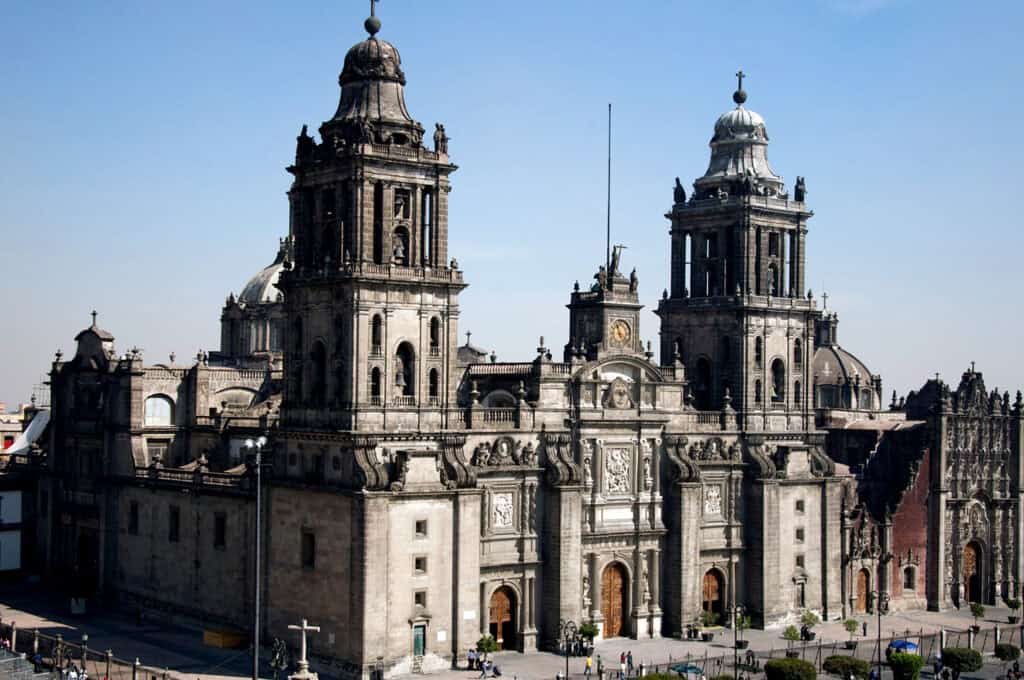
Mexico City Metropolitan Cathedral, Mexico City, Mexico, Photo By Sam Beebe
The Mexico City Metropolitan Cathedral, situated on the Zócalo, exemplifies a blend of Renaissance, Baroque, and Neoclassical architectural styles. The cathedral features numerous sculptures, altarpieces, retablos, and paintings.
Palacio de Bellas Artes
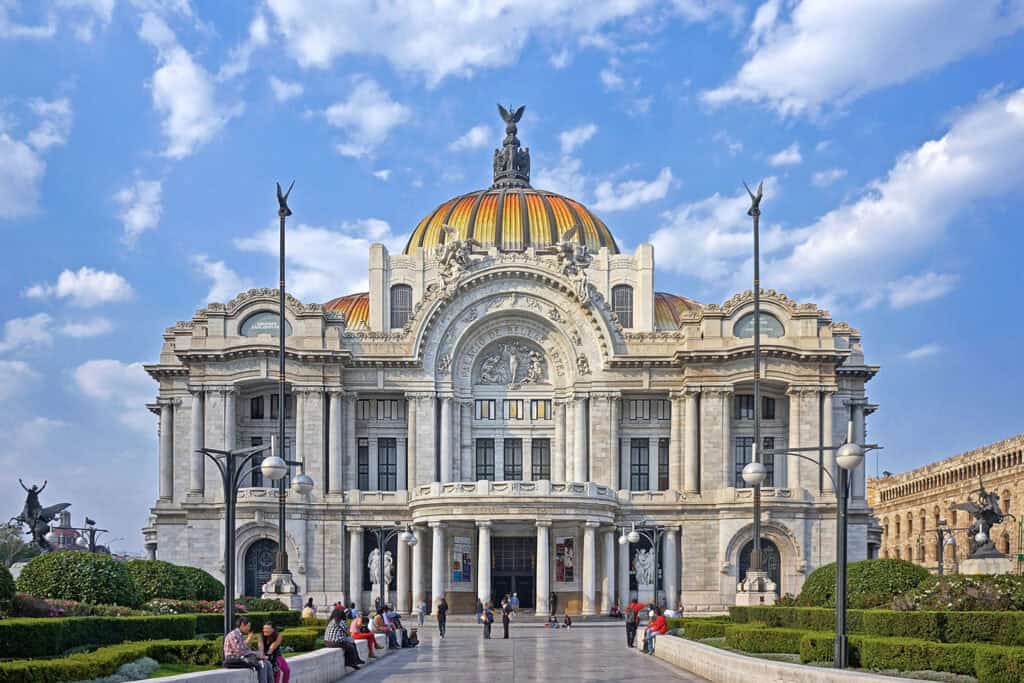
Palacio de Bellas Artes, Mexico City, Mexico, Photo by Xavier Quetzalcoatl Contreras Castillo
The Palacio de Bellas Artes in Mexico City, completed between 1904 and 1934, showcases eclectic architecture with Art Nouveau and Art Deco elements.
National Autonomous University of Mexico
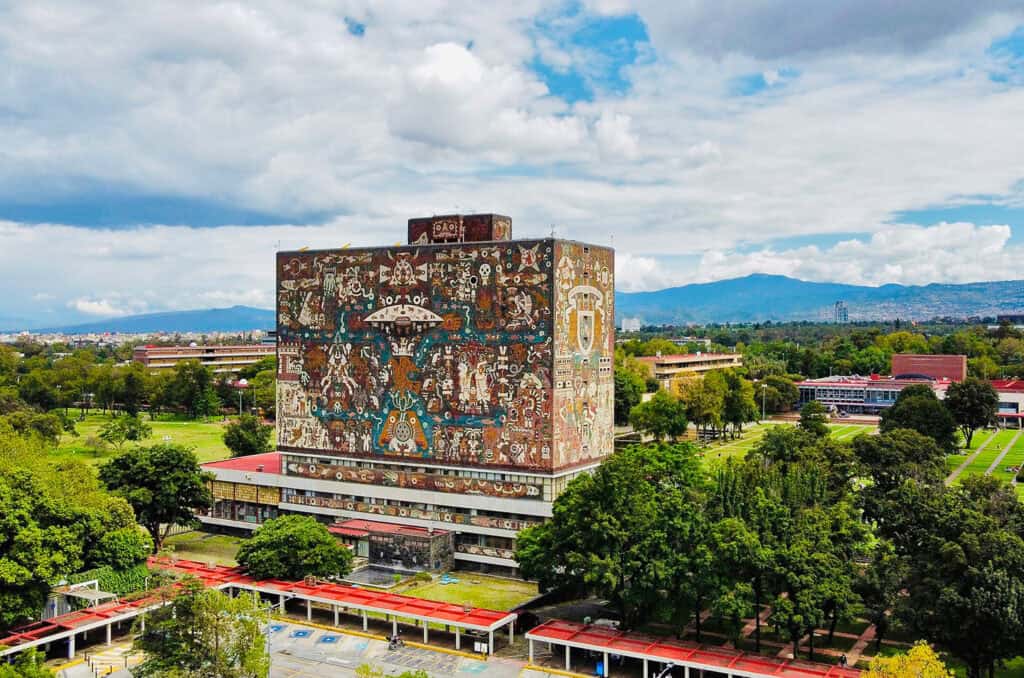
The National Autonomous University of Mexico (UNAM) is a key site of modern Mexican architecture, featuring notable works by Juan O’Gorman and Mario Pani.
See also: Traditional Mexican Architecture: 3 Highlights That Define Mexican Architecture
Pre-Columbian Architecture
1. Chichen Itza

Chichén Itzá was a prominent pre-Columbian city built by the Maya civilization during the 10th to 12th centuries CE. Known for its impressive and varied architecture, it showcases styles from central Mexico and the distinct Puuc and Chenes styles of the Northern Maya lowlands.
This diversity reflects its status as one of the largest and most cosmopolitan Maya cities.
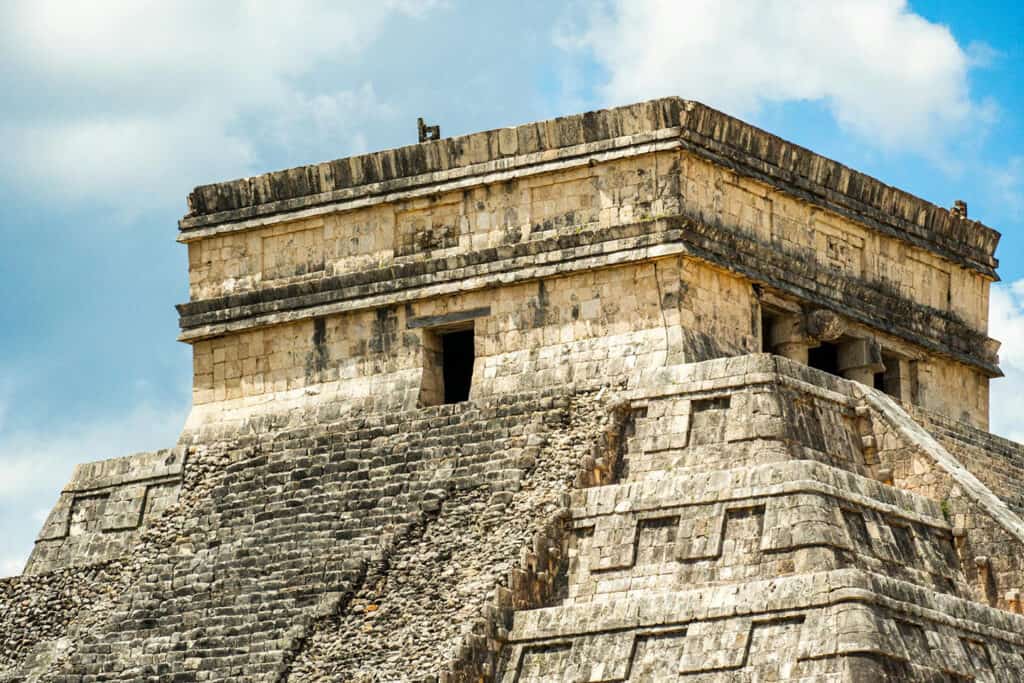
Significant structures like the El Caracol, the Great Ball Court, and the Temple of the Warriors highlight the city’s architectural grandeur and its role as a major political, economic, and religious hub.
Colonial Architecture
2. Mexico City Metropolitan Cathedral
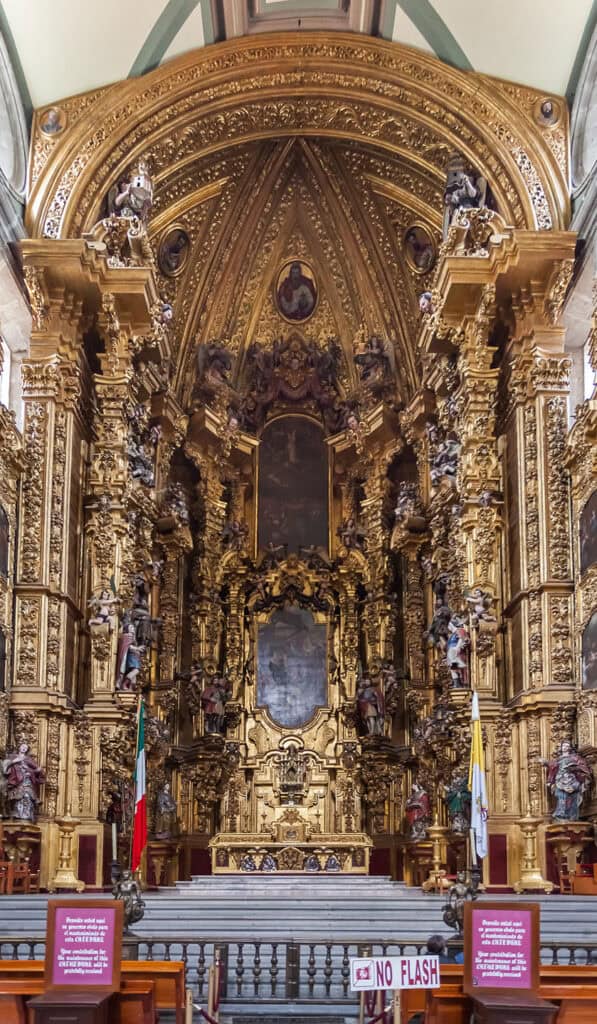
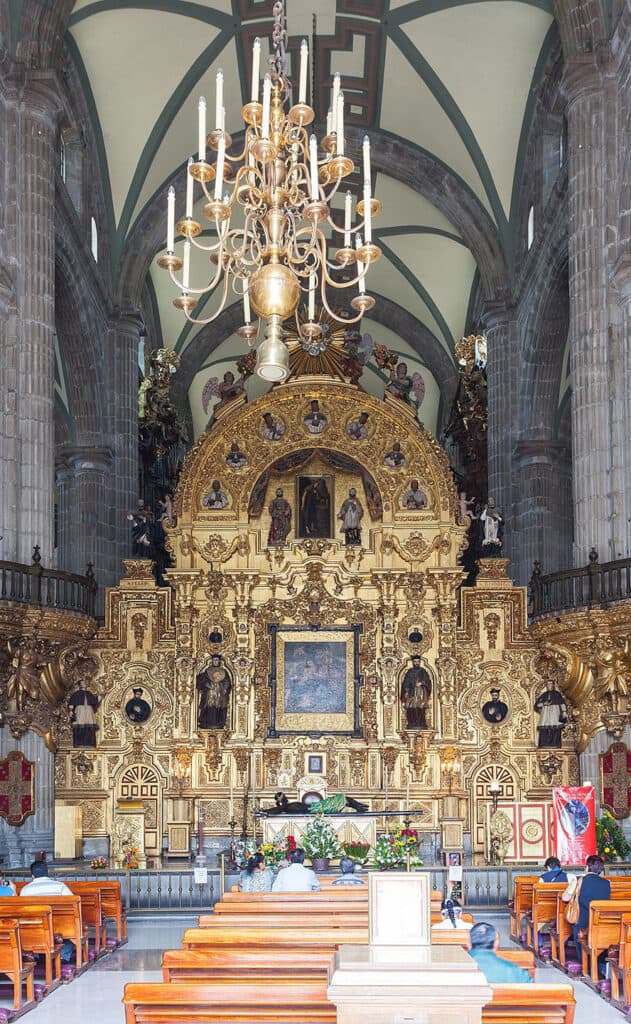
The Mexico City Metropolitan Cathedral, located atop the historic Zócalo, exemplifies the grandeur of Renaissance style fused with Mexican Baroque elements. Construction began in 1573 and spanned over 200 years, with each era leaving its distinct mark on the design.
The cathedral’s interior and exterior feature intricate sculptures, elaborate altarpieces, finely crafted retablos, and a notable collection of paintings, all contributing to the rich mosaic of Mexico’s cultural and religious history.
3. Church of Santo Domingo
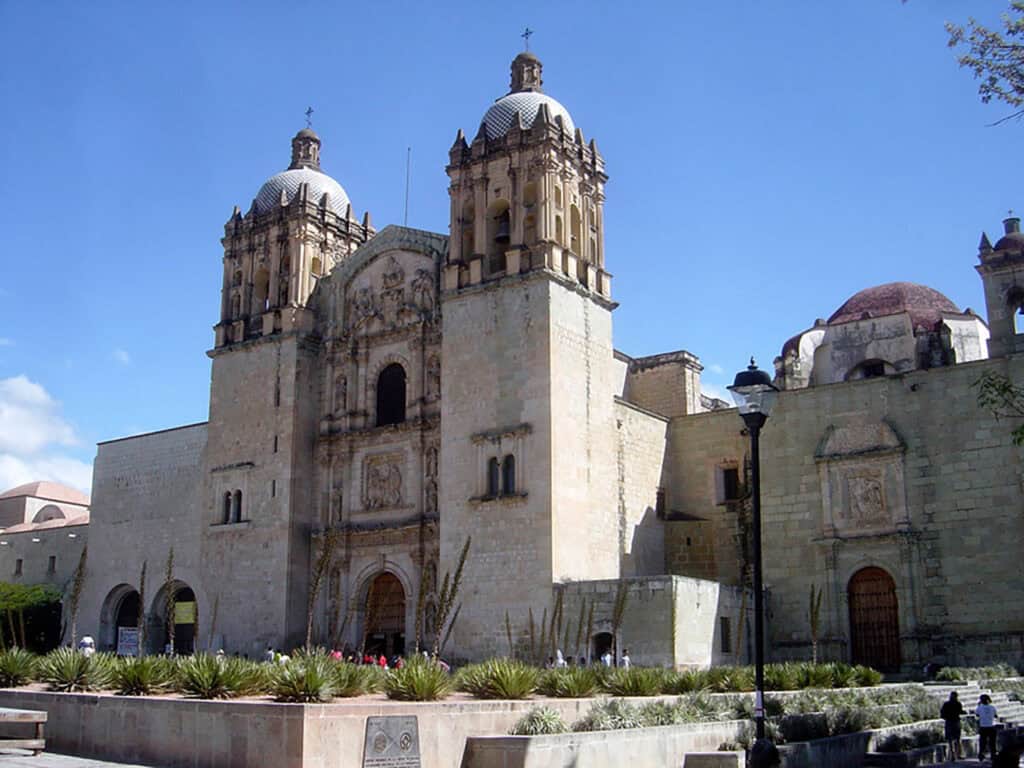
The Church of Santo Domingo in Oaxaca is a prominent example of Mexican Baroque style, featuring an ultra Baroque facade with intricate religious sculptures. Its interior boasts richly decorated altars and a dramatic choir area.
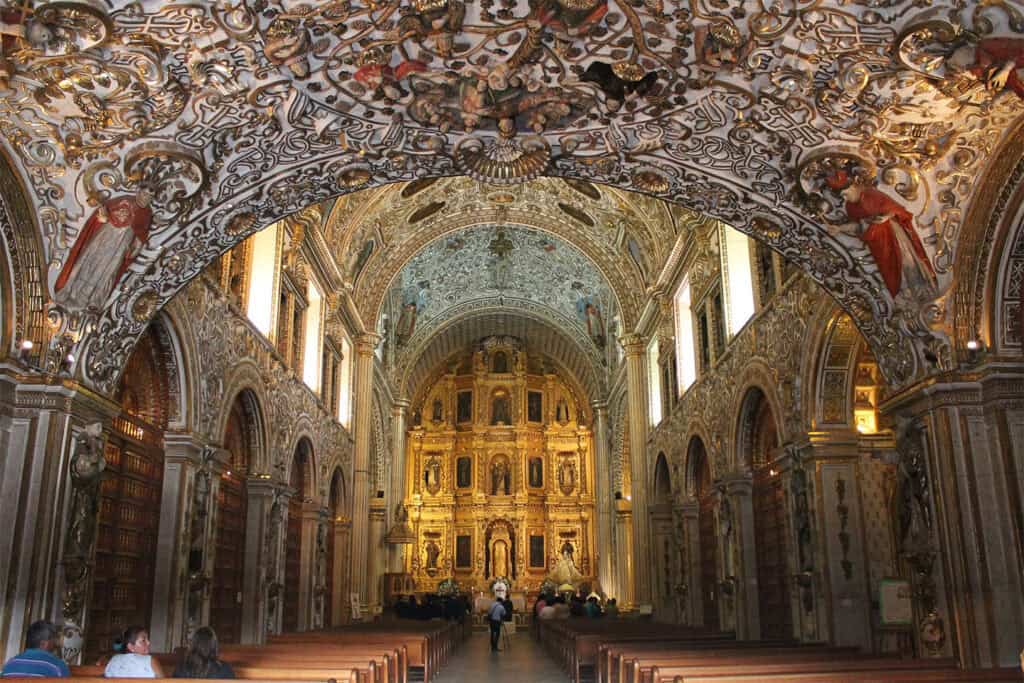
Construction began in the late 16th century, making it a significant cultural and historical landmark. The church symbolizes the blending of indigenous and European practices during the colonial period, serving as both a place of worship and a testament to the artistic and architectural advancements of its time.
19th Century Architecture
4. Hospicio Cabañas

Hospicio Cabañas, located in Guadalajara, is a pivotal example of 19th-century architecture. Designed by architect Manuel Tolsá, it originally served as an orphanage. Recognized as a UNESCO World Heritage Site, it continues to be an essential landmark in Mexican architectural history.
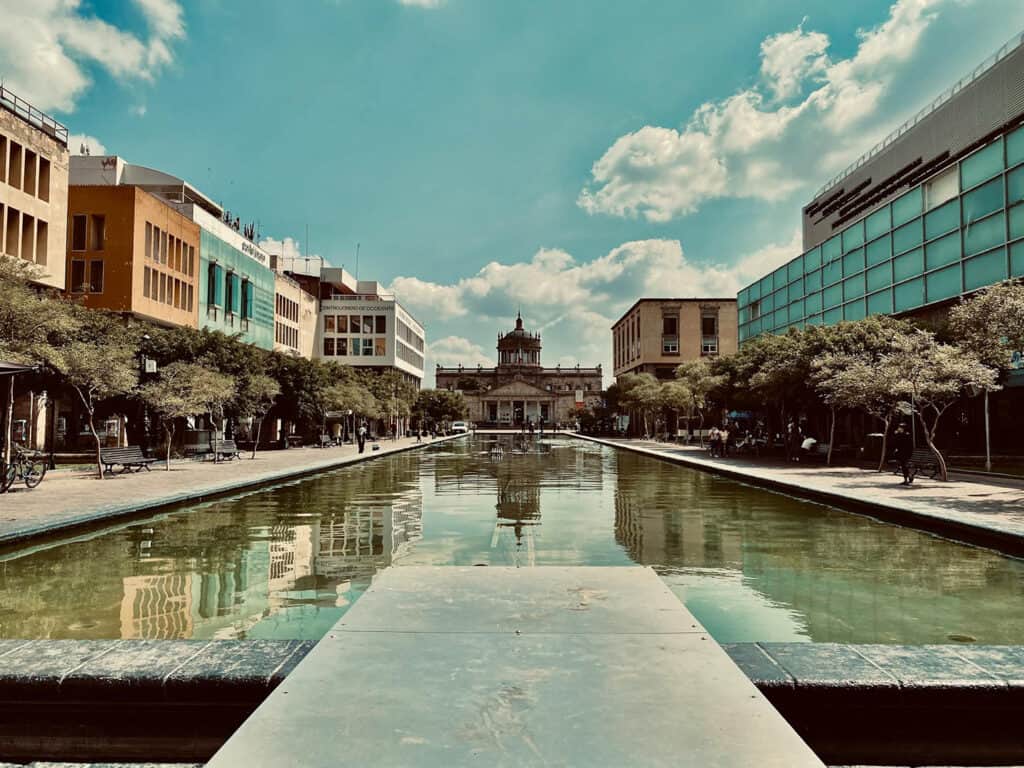
The centerpiece is the chapel, adorned with intricate sculptures and frescoes by José Clemente Orozco. This site represents a blend of social purpose and artistic expression, reflecting Mexico’s dedication to its cultural heritage during a time of change.

Modern Mexican Architecture
5. Palacio de Bellas Artes
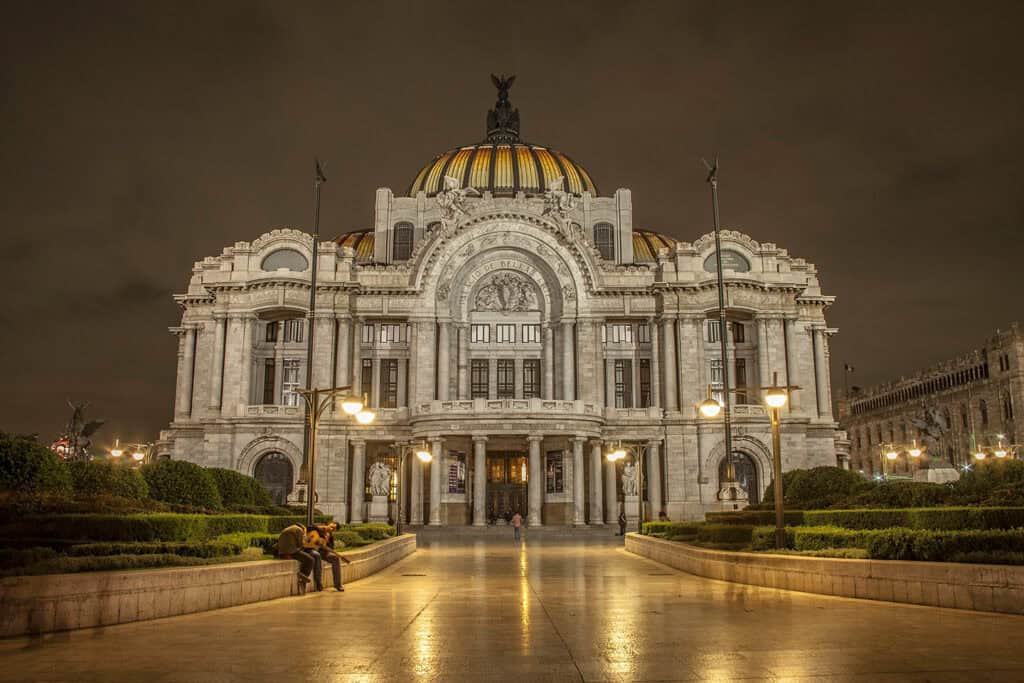
The Palacio de Bellas Artes, celebrated as a fine example of eclectic architecture, combines Art Nouveau and Art Deco styles. Construction began in 1904 and was completed in 1934.
It serves as a cultural center for the fine arts, hosting artistic performances ranging from ballet to opera.
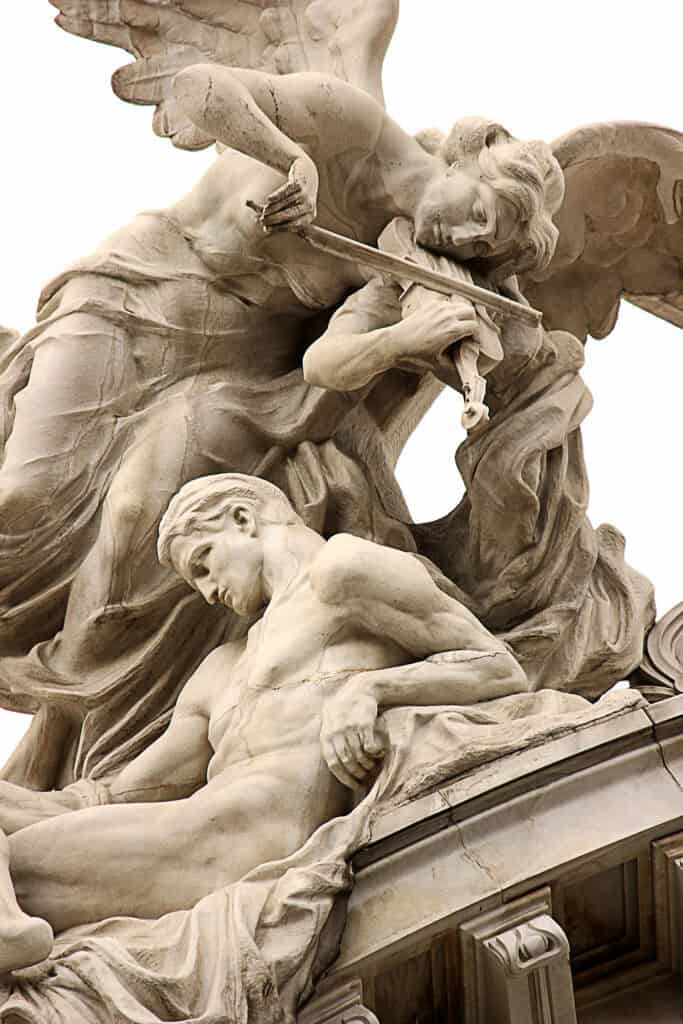
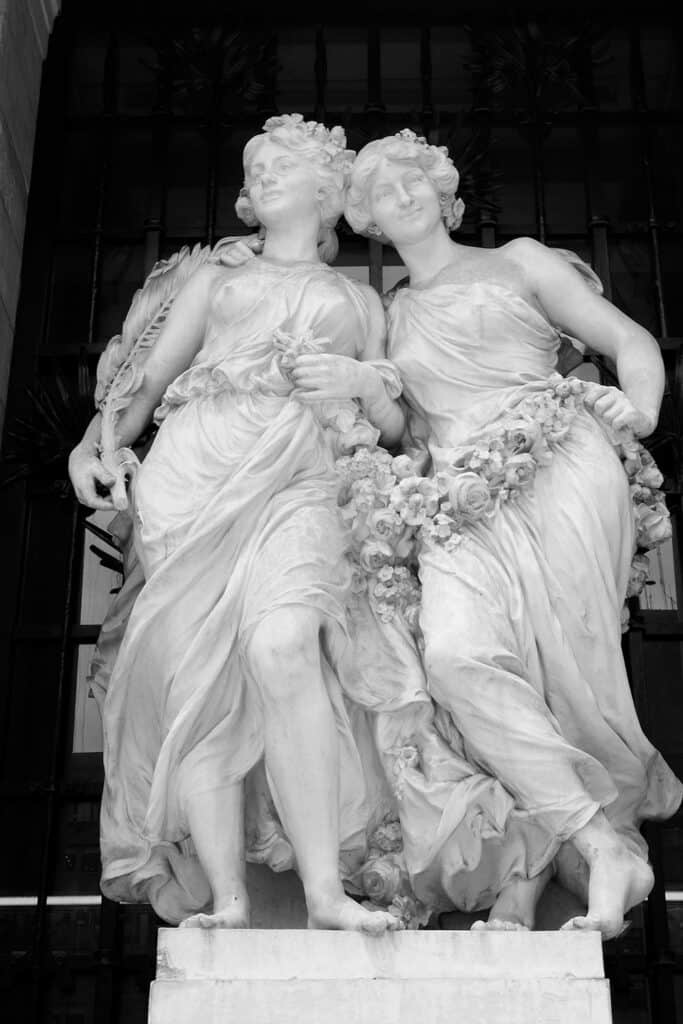
The exterior, adorned with a glittering white Carrara marble façade, contrasts with the dynamic murals inside, many crafted by renowned Mexican artists like Diego Rivera.
The building’s impressive dome and grand staircases attract visitors who appreciate both its historical significance and architectural beauty.
6. National Autonomous University of Mexico

The National Autonomous University of Mexico (UNAM) is a prominent example of modern Mexican architecture, showcasing designs by notable architects such as Juan O’Gorman and Mario Pani.
The campus features significant structures from various architectural periods, including the Rectory Building, renowned for its murals by Diego Rivera and Siqueiros that reflect Mexican cultural history and identity.
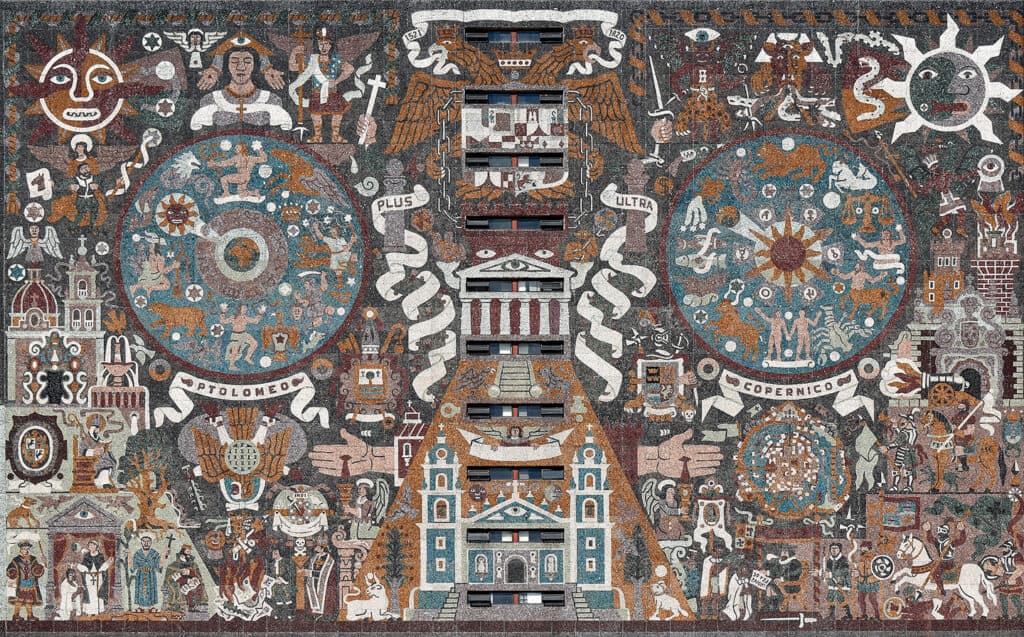
Another architectural highlight within the broader cultural landscape of Mexico City is the Biblioteca Vasconcelos, known for its contemporary design and innovative use of space. UNAM plays a crucial role in education and cultural exchange, contributing significantly to Mexico’s artistic and academic community.
7. Biblioteca Vasconcelos
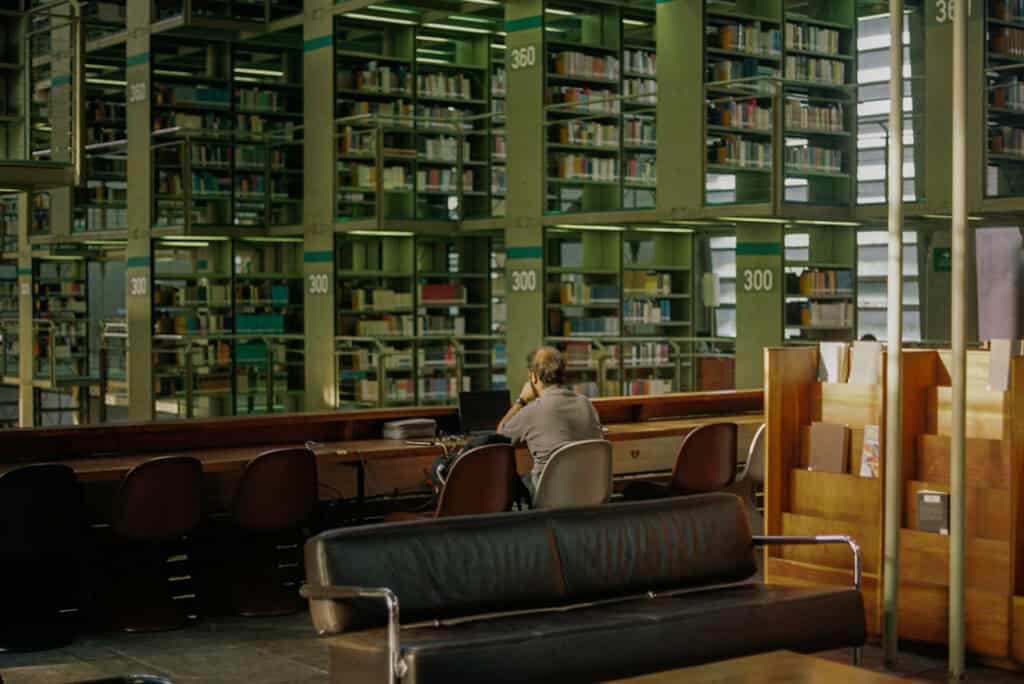
The Biblioteca Vasconcelos in Mexico City is a striking example of modern architectural styles, designed by Mexican architect Juan O’Gorman. Completed in 2006, it integrates contemporary design with functionality, serving as a vital public resource.
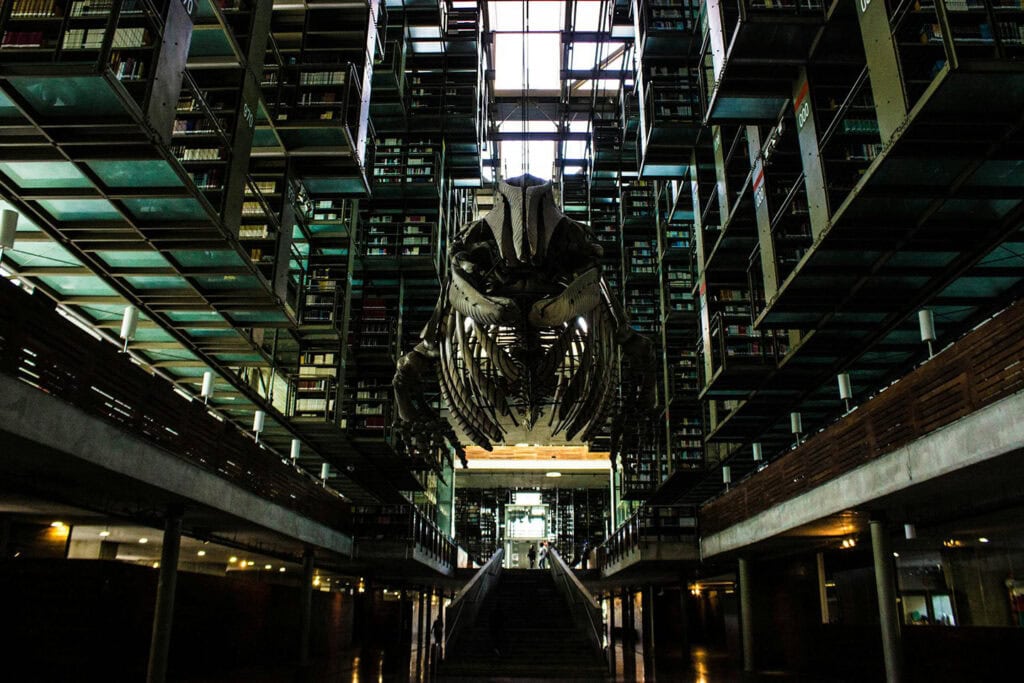
The library is known for its spacious interiors and innovative use of natural light, creating a welcoming environment for readers and students. Its architecture emphasizes openness and accessibility, making it a popular gathering spot in the bustling metropolis.
The building’s design focuses on modern architectural principles, reflecting Mexico’s commitment to progressive infrastructure projects.
See also Famous Architecture in Brazil: Exploring 14 Iconic Buildings
Regional and Vernacular Architecture
8. Oaxaca’s Traditional Buildings
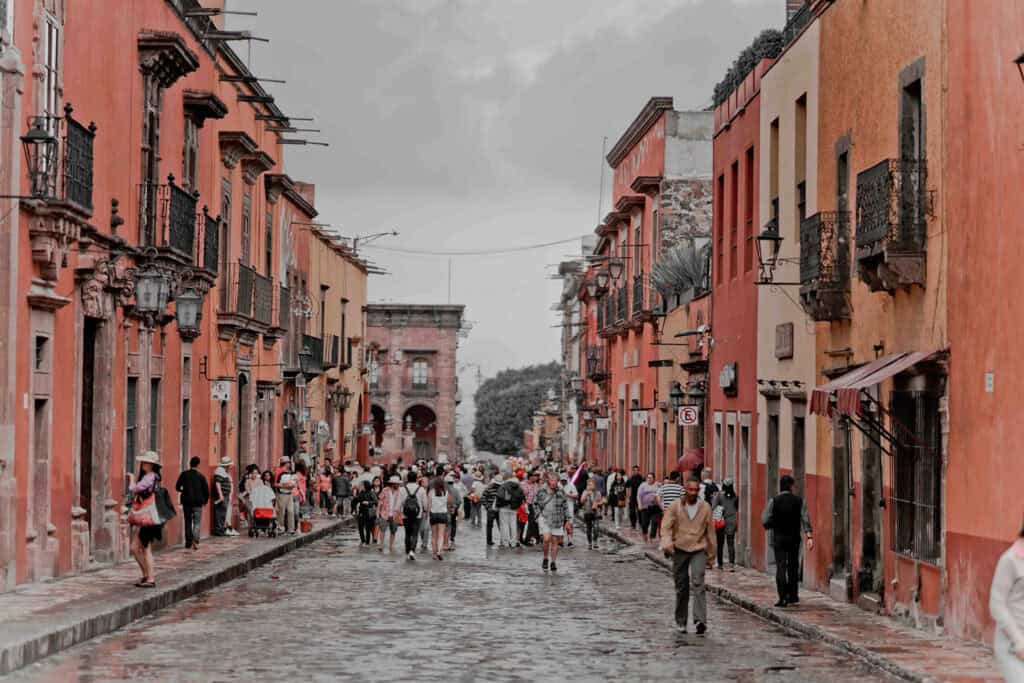
Oaxaca, Mexico, is renowned for its traditional buildings, which showcase diverse architectural building types. The city’s rich history is reflected in its colonial-era structures, such as the Santo Domingo de Guzmán Church and the Oaxaca Cathedral.
These buildings feature ornate facades, courtyards, and vibrant colors, highlighting the unique blend of indigenous and Spanish influences. Oaxaca’s architectural charm extends to its residential areas, where traditional adobe houses with red-tiled roofs and wooden beams preserve the region’s cultural heritage.
Famous Architecture in Mexico: A Recap
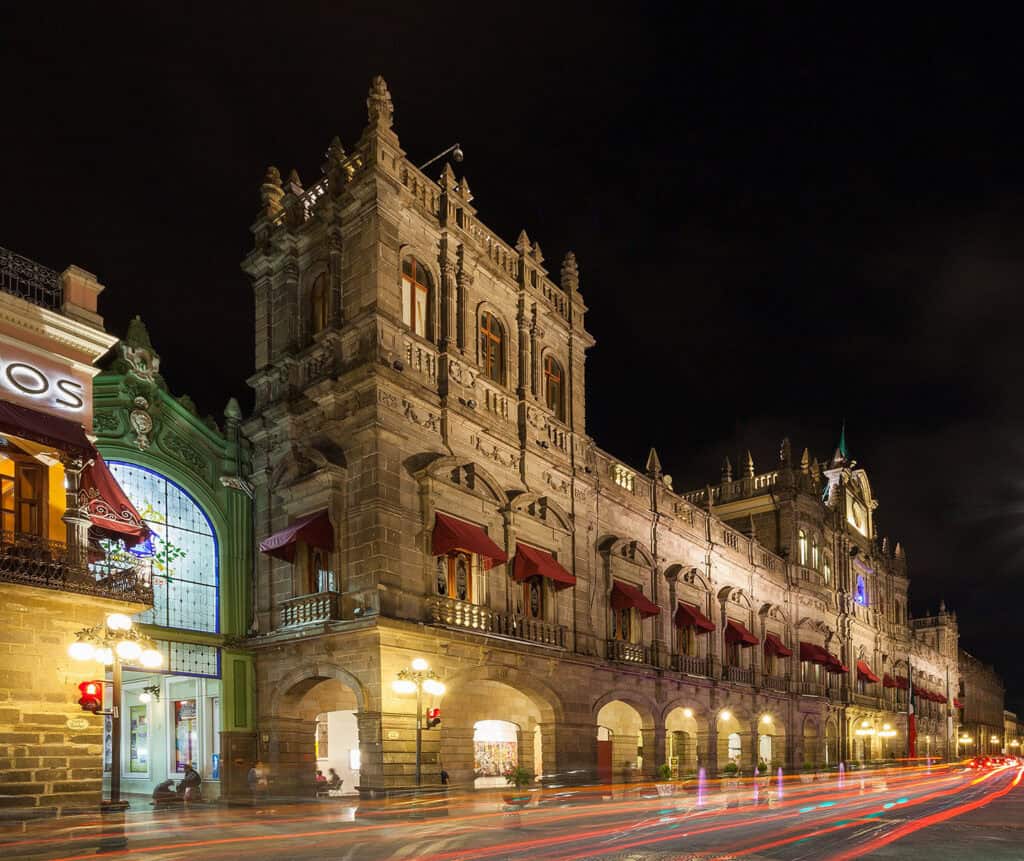
Mexican architecture weaves a rich story from ancient wonders like Chichen Itza to colonial masterpieces and 19th-century landmarks. The influence of the Mexican Revolution marked a pivotal shift, ushering in an era of monumental public buildings that symbolize the nation’s evolving identity and aspirations.
Today, contemporary architecture continues to push boundaries, blending tradition with innovation to create spaces that resonate with both historical significance and modern functionality.




